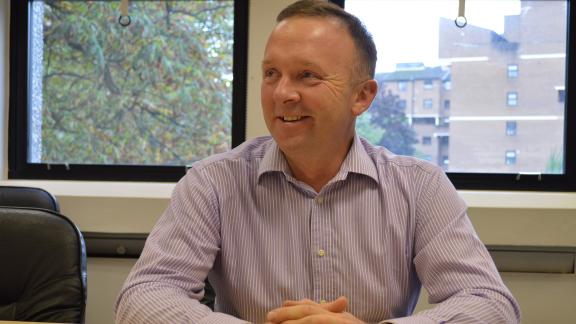Economically speaking: Market failure and the NHS

Economically Speaking is a series of blog posts that draw on basic economic principles to understand the challenges facing the NHS. Written by Paul Healy, senior economics adviser at the NHS Confederation, this edition explores market failure in healthcare.
failure /ˈfeɪljə/ n. occurring in economics when a free market allows for an inefficient allocation of resources due to a number of factors.
Healthcare is almost always an imperfect market. This isn’t a judgement on the quality of care provided, rather an academic reflection of the nature of its supply and demand. ‘Perfect’ in economics relates to markets in which buyers and sellers have complete information about easily comparable products or services, so much so that it allows economists to accurately predict their price.
Economic theory assumes individuals in a perfect market will engage in activities if benefits to them are more than the costs they incur. This balance of private gain versus private loss is crucial to understanding free market behaviour, yet it naturally omits benefits and costs to the wider society. These are described as ‘externalities’ and are used to identify any positive or negative effect from a market transaction to people other than the consumer or producer.
Antibiotics are a useful example to demonstrate this concept. Antimicrobial resistance (AMR) means each dose of antibiotics consumed breeds more resistant bacteria, which is a negative externality causing a cost to society. This social cost is bigger than the private cost to consumers and we would expect to see higher levels of consumption than is socially optimal.
Essentially, people will consume more antibiotics than society as a whole would want because they fail to recognise the costs of doing so elsewhere. This is a ‘market failure’ because resources are being allocated inefficiently from a social benefit perspective.
The main theoretical approach to correcting this failure would be to impose a tax on antibiotics that increases the private cost of consuming them and brings it into line with the cost estimated to society. This was an option recently explored by the review on AMR chaired by the economist Jim O’Neill.
The final report considered a tax on antibiotics at a country level and suggested that while it could raise revenue, it probably wouldn’t lead to behaviour change in patients that are unlikely to be ‘price sensitive’. Instead, a central recommendation of the review was to raise AMR awareness so that patients do not demand, and clinicians do not prescribe, antibiotics when they are not needed.
Another relevant example is the market for vaccinations. In this instance, there is believed to be a positive externality because each vaccination protects not only the recipient but other people too. This leads to so-called ‘herd immunity’, which occurs when a sufficient proportion of the population is immune and thus the social gain from each vaccination is greater than the private gain to individuals.
This presents the opposite challenge to the earlier antibiotic example, because it is assumed that consumption will be less than is socially optimal. Essentially, people will consume less vaccines than society as a whole would want because they fail to recognise the benefits of doing so elsewhere. Again, a market failure.
One prominent case study is the fall in measles, mumps and rubella (MMR) vaccination rates between 1996 and 2004. Uptake fell from 92 to 80 per cent, which was well below the current target rate of 95 per cent and the level recommended by the World Health Organization as needed to prevent MMR spreading in a community.
The cause of this dip is widely recognised as the claim – made in a now discredited report – that linked the vaccine to an increased risk of autism in children. Since then, there has been a noticeable increase in confirmed cases of measles.
Economic theory would generally recommend subsidies in order to encourage greater uptake in vaccinations, although clearly in this case the recipients are not motivated by price, but rather concern about the vaccine.
Instead, the action taken by the government was similar to what has been recommended with antibiotics, which is investment in public information campaigns to better inform the public about the relative costs and benefits. This has enabled rates to increase back up to around 92 per cent, which is nonetheless below the ideal threshold.
Both examples demonstrate the extent to which private and social interests might clash, as well as the strength of social solidarity in the NHS. While market theory mostly relies on price mechanisms to correct a failure, in the NHS, much more focus is on improving awareness to inform people’s decisions. This information helps people to understand the social costs or benefits, with a belief that people may place greater weight on them than the impact on them individually.
Key to this is recognising that the NHS generally means more to people than most public services, and public polling shows it as the thing, above all else, that makes people most proud to be British. People would seem to be driven by an interest in how the NHS is performing beyond where it might directly affect them, although this can be tested when applied locally.
As the NHS looks to transform over the coming years, it will want to harness this social spirit and describe where changes will have a positive impact on the whole of society. It will need to be honest though about negative effects and work to convince the local population that reforms will deliver a better allocation of scarce resource.
Paul Healy is a senior policy adviser on economics and regulation at the NHS Confederation. Follow him and the organisation on Twitter @NHSConfed_PaulH @NHSConfed
Health economics 101
Catch up on all the posts in the Economically Speaking series:
- The impact of limited resources on the NHS
- An efficiency drive with a delicate balancing act
- Redefining the agency relationship
Like this post?
Share it on Twitter



